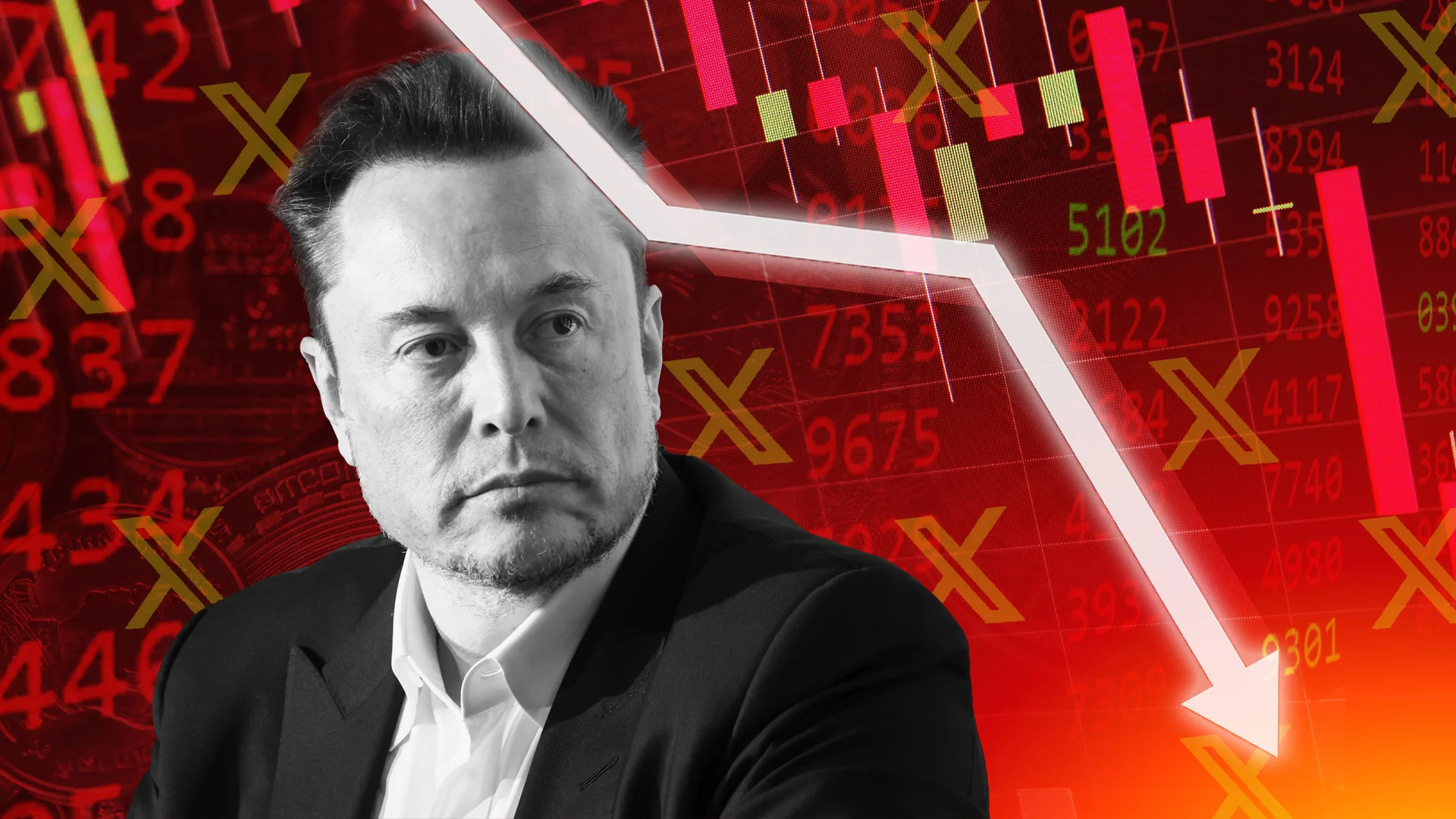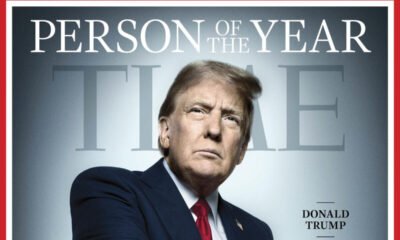Business
Elon Musk’s Growing Troubles. X Under Scrutiny With Stagnant Growth And Slipping Revenues. Tesla Hacked 4 Times In One Day Even As Tesla Sales In Europe Are Sliding.
Published
11 months agoon

Elon Musk has never been one to shy away from challenges, but his acquisition of social media platform X (formerly Twitter) is proving to be a more complicated venture than he anticipated. Since taking the reins, Musk has admitted that the platform is facing a “very dire situation from a revenue standpoint,” a reality that’s become all too clear for the billionaire.
According to a recent report, Wall Street banks are preparing to offload some of the $13 billion in debt they loaned Musk to finance his $44 billion acquisition of X. Three major banks—Morgan Stanley, Bank of America, and Barclays—are reportedly gearing up to sell off up to $3 billion in debt, with the sale slated for next week.
This news follows a memo Musk sent to X employees earlier this month, where he laid bare the platform’s struggles. Despite acknowledging X’s influence in shaping national conversations, Musk admitted, “Our user growth is stagnant, revenue is unimpressive, and we’re barely breaking even.”
The sale of this debt, which is tied to Musk’s 2022 purchase of X, is proving to be more difficult than expected. Banks typically offload loans tied to acquisitions shortly after deals close, but in this case, the challenge has been mounting. The banks involved in the financing, including Morgan Stanley, Bank of America, and Barclays, are expecting to recover 90 to 95 cents on the dollar, which indicates just how much risk they’re taking on.
Musk’s radical changes to the platform, including sweeping layoffs—especially in content moderation—and his own controversial posts, have led to a drop in advertising revenue. This, in turn, has increased the perceived risk of default, further dragging down the value of the debt.
Interestingly, in November, it was reported that Musk’s growing political clout and ties to former U.S. President Donald Trump might have banks rethinking X’s future. This could potentially ease their ability to sell off the debt without significant losses. However, efforts to sell the debt in late 2022 saw bids that would have required the banks to take losses of up to 20% on the debt’s face value.
The consortium of banks behind Musk’s acquisition also includes Mitsubishi UFJ, BNP Paribas, Mizuho, and Societe Generale, and they’re all facing the tough task of facing this high-stakes financial situation.

Elon Musk Dives Into European Politics, Tesla’s Sales Struggle Across the Continent
Elon Musk may be stirring the political pot in Europe, but his electric vehicle company, Tesla, is facing some serious headwinds on the continent.
According to recent data from the European Automobile Manufacturers’ Association (ACEA), Tesla’s sales in the European Union dropped by 13% in 2024. With a growing number of competitors rolling out more affordable EVs, Tesla is feeling the squeeze in its third-largest market.
Big markets like Germany, France, and Italy have seen substantial declines in Tesla sales, as revealed by analysis from Argus Media. In Germany, where Tesla’s Berlin gigafactory is located, sales plummeted by a staggering 41% in 2024, a much sharper drop than the 27% decline in the overall battery EV market.
This dip in Tesla’s sales comes at a time when the broader EV market in Europe is also shrinking, largely due to the end of key subsidies in various countries. But according to Argus analyst Dylan Khoo, “Tesla is shrinking faster than that, and in specific markets, it is outpacing that decline.”
While Tesla saw some growth in countries like Belgium, the Netherlands, and Sweden last year, the overall outlook in Europe is less than favorable, especially with competitors launching mass-market EVs at more affordable price points. For instance, Volvo, owned by China’s Geely, saw its sales soar nearly 30% in the EU, largely driven by the success of its $40,000 EX30 electric crossover.
Other rivals like Renault and BMW also had strong showings in Europe and the UK last year, with Renault introducing budget-friendly models like the R5. Meanwhile, Tesla’s product lineup is starting to feel a little stale. Since launching the Model Y in 2021, the automaker hasn’t introduced any new models to the European market, and its highly anticipated Cybertruck isn’t available in the UK or Europe yet.
“It’s looking a little bit samey,” said Philip Nothard, Insight and Strategy Director at Cox Automotive. Nothard noted that Tesla is now up against a more crowded EV market, with domestic European manufacturers and ambitious Chinese carmakers all vying for a piece of the pie.
Both Khoo and Nothard believe that Tesla’s revamped Model Y, set to be delivered later this year, will be crucial for turning things around in Europe. The company will be hoping the new Model Y will help lift it out of its first-ever annual sales decline in 2024 and re-establish Tesla’s dominance in the European EV market.
Tesla’s Struggles Meet Political Backlash
Tesla’s troubles in Europe aren’t just about the numbers—Elon Musk’s political entanglements are adding fuel to the fire. As Musk shakes up European politics, his recent endorsements, including support for Germany’s far-right AfD party, have sparked outrage, particularly in Germany. Chancellor Olaf Scholz has condemned Musk’s backing of the “extreme right,” calling it “completely unacceptable.”
The fallout has been swift, with several German companies announcing they’ll stop buying Tesla vehicles in protest. Meanwhile, activists made their displeasure known by projecting a controversial gesture from Musk at Donald Trump’s inaugural parade onto the side of Tesla’s Berlin gigafactory.
Musk’s political stirrings aren’t confined to Germany. In the UK, he’s feuded with Prime Minister Keir Starmer and is reportedly considering a donation to the right-wing Reform Party. His polarizing actions have left Tesla vulnerable to competitors keen to win over disgruntled owners.
Polestar, one of Tesla’s rivals, has seized the opportunity. Michael Lohscheller, the CEO of the Swedish EV brand, revealed that he’s instructed sales staff to target Tesla owners who are put off by Musk’s political moves. Echoing Scholz’s condemnation, Lohscheller called Musk’s support for AfD “We get a lot of people writing that they don’t like all this… A lot of people have very, very negative sentiment.”
Automotive analyst Matthias Schmidt, based in Germany, predicts that Musk’s political forays will eventually affect Tesla’s European sales.
However, Cox Automotive’s Philip Nothard believes that while Musk’s politics are a talking point, most consumers are more concerned with the car’s price and performance. For many, these factors will likely outweigh the CEO’s political views when it comes to making a purchase decision.
![]()
Tesla Hacked. A Day of Chaos and $129,500 in Bounties
In growing cybersecurity threats, Tesla has found itself in the crosshairs of hackers once again. But this time, the attack wasn’t limited to just your typical digital devices—Tesla’s Wall Connector, a crucial part of its charging infrastructure, was targeted in a high-profile hacking event.
During the Pwn2Own competition, a hacking event renowned for attracting top-tier ethical hackers and security researchers, Tesla was targeted four times in a single day. The result? A staggering $129,500 in zero-day bounties awarded to the successful hackers.
The Pwn2Own event, which ran from January 22 to 24 in Tokyo, has been an annual gathering for hackers since 2007. Known for its competitive spirit, the event challenges participants to exploit zero-day vulnerabilities—flaws unknown to the vendor—across a variety of devices, from smartphones to printers. This year, Tesla co-sponsored the event, bringing its Wall Connector into the spotlight, alongside its broader automotive focus.
While the specifics of the vulnerabilities used will remain under wraps for 90 days to allow Tesla to address the issues, here’s what we know about the attacks on the Tesla Wall Connector:
PHP Hooligans’ Exploit: This team was able to exploit a “Numeric Range Comparison Without Minimum Check” bug (CWE-839), which allowed them to take over and crash the Tesla Wall Connector. Their successful attack earned them a $50,000 bounty.
Synacktiv’s Logic Bug: The Synacktiv team used a logic bug as part of a chain of exploits to compromise the Tesla Wall Connector via the charging connector itself. Their “outstanding and inventive” research netted them a $45,000 reward.
PC Automotive Team’s Collision Exploit: This team used a known vulnerability, rather than a zero-day, to attack the Tesla Wall Connector, earning them $22,500 for their successful exploit.
Summoning Team’s Two-Vulnerability Chain: Sina Kheirkhah of the Summoning Team used a two-vulnerability chain to breach the Tesla Wall Connector, securing a $12,500 bounty.
This hacking frenzy shows the vulnerability of even the most high-tech devices, including those critical to Tesla’s electric vehicle ecosystem even as the company works to patch these vulnerabilities.
Does Elon Musk Have a Game Plan for Tesla Stock?
Meanwhile, as Tesla gears up to release its fourth-quarter earnings on January 29, all eyes are on the company to see whether it can justify the recent rally in its stock price.
After a remarkable surge since November’s presidential election, Tesla’s stock is facing its first real test in 2024, with cracks beginning to show earlier this year. The company’s 2024 deliveries fell short of expectations, marking a rare year-over-year drop, and Q4 earnings are expected to reveal whether the rally is sustainable or just a blip.
Tesla’s Q4 Earnings. What’s Expected?
Analysts predict a modest rise in Tesla’s Q4 revenues, with an expected increase of 7.8% year-over-year.
Earnings per share (EPS) are forecast to grow by around 12.8%, reaching $0.64. However, despite the Q4 optimism, Tesla’s full-year profits are expected to fall by more than 20%, continuing a downward trend for the second consecutive year. This marks a significant challenge for the electric vehicle (EV) giant, which has been struggling with the brutal price war that’s affecting its margins.
To boost deliveries, Tesla has slashed vehicle prices, but this has come at the cost of profitability.
The Pressure on Tesla’s Stock Rally
While Tesla has benefited from favorable policy conditions under the Trump administration, it now faces a set of challenges that could undermine its stock’s recent gains. One of the major issues is the growing unpopularity of CEO Elon Musk. Customer sentiment surveys show that many Tesla owners regret their purchases and are considering selling their vehicles. This discontent could have a significant impact on demand, which is crucial for maintaining the stock’s momentum.
Additionally, Tesla might find itself caught in the crossfire of the ongoing trade war, especially if the company is targeted by countries that are in the Trump administration’s sights. If President Trump moves forward with policies that dilute EV-friendly incentives, it could further dampen the prospects for Tesla and the broader EV industry.
Tesla’s Core EV Business
Despite the short-term hurdles, Tesla’s core EV business remains robust. The company has maintained its leadership position in key markets and demonstrated impressive growth, with a 5-year revenue compound annual growth rate (CAGR) of 35%. However, this growth is expected to moderate, with revenue growth projected to slow to just 3% in FY2024.
Still, analysts remain optimistic about Tesla’s ability to expand its market share, with projected delivery growth of 20-30% by 2025. Yet, this growth is likely to be tempered by increasing competition and the pressures on margins, which are currently at 18.23%.
The company’s ability to maintain healthy margins, despite fierce competition, has been a cornerstone of its financial success. But some analysts, including those at Morgan Stanley, have raised concerns about potential headwinds in FY2025. Cuts to EV incentives and the rising threat from Chinese automakers could slow Tesla’s volume growth, particularly if its gross margin takes a hit.
Can Musk Damage Control?
With all these factors at play, Elon Musk will have his work cut out for him during Tesla’s upcoming earnings call.
While the company’s core business remains strong, the broader macroeconomic environment, along with mounting competition and potential policy changes, presents significant risks.
Musk will need to offer investors more than just optimism to justify the sharp rise in Tesla’s stock price over the past year. As the company faces both internal and external challenges, the road ahead for Tesla and its stock remains uncertain.
As for X, the story remains much the same.
You may like
-


Modi’s Ideal Deal With Tesla To Produce Cars In India—But Will And More Importantly Can Tesla Take That Chance?
-


Germany’s Friedrich Merz’s Big Balancing Act—Trump, Borders & Europe’s Future. Can He Deliver?
-


How It’s Not Trump But Vladimir Putin That Europe Is Stinging From: Trump’s U-Turn On Europe, Russia’s Strong Supply Chain—A Formidable Opponent!
-


Salvaging The $44 Billion Investment In X. Winds Of Change For Musk Amid His ‘Fix’ Mission Over High Support For Zelenskyy On X
-


Why Are Japanese Companies Not Happy With Trump? How Trump 2.0 Is Shaking The World Into A ‘Rude’ Awakening?
-


Trump Blames Zelenskyy For Russia-Ukraine War As Peace Talks Sideline Kyiv. EU $6.2 Billion Military Aid Package For Ukraine—What’s The Real Plan?
